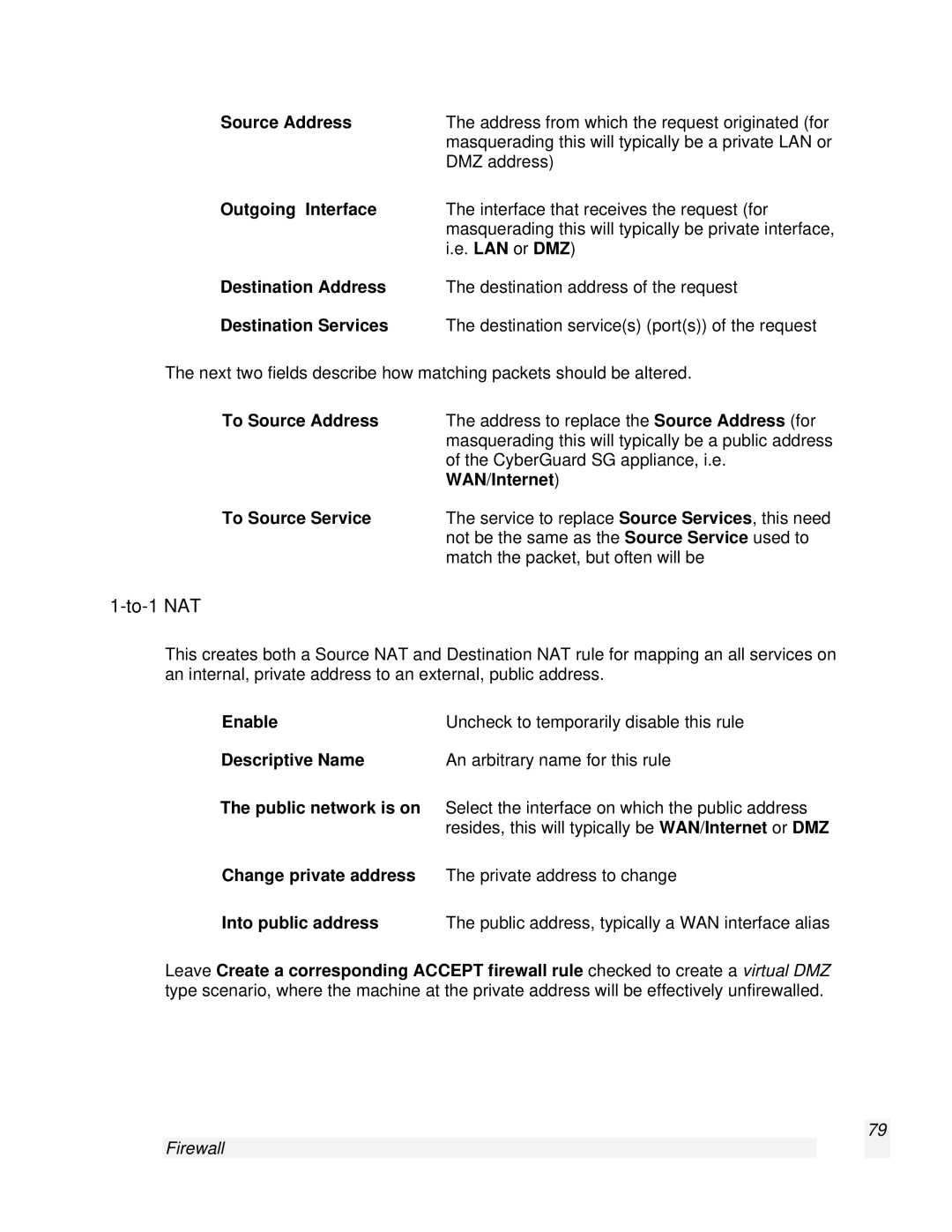Source Address | The address from which the request originated (for |
| masquerading this will typically be a private LAN or |
| DMZ address) |
Outgoing Interface | The interface that receives the request (for |
| masquerading this will typically be private interface, |
| i.e. LAN or DMZ) |
Destination Address | The destination address of the request |
Destination Services | The destination service(s) (port(s)) of the request |
The next two fields describe how matching packets should be altered.
To Source Address | The address to replace the Source Address (for |
| masquerading this will typically be a public address |
| of the CyberGuard SG appliance, i.e. |
| WAN/Internet) |
To Source Service | The service to replace Source Services, this need |
| not be the same as the Source Service used to |
| match the packet, but often will be |
1-to-1 NAT
This creates both a Source NAT and Destination NAT rule for mapping an all services on an internal, private address to an external, public address.
Enable | Uncheck to temporarily disable this rule |
Descriptive Name | An arbitrary name for this rule |
The public network is on Select the interface on which the public address
| resides, this will typically be WAN/Internet or DMZ |
Change private address | The private address to change |
Into public address | The public address, typically a WAN interface alias |
Leave Create a corresponding ACCEPT firewall rule checked to create a virtual DMZ type scenario, where the machine at the private address will be effectively unfirewalled.
79
